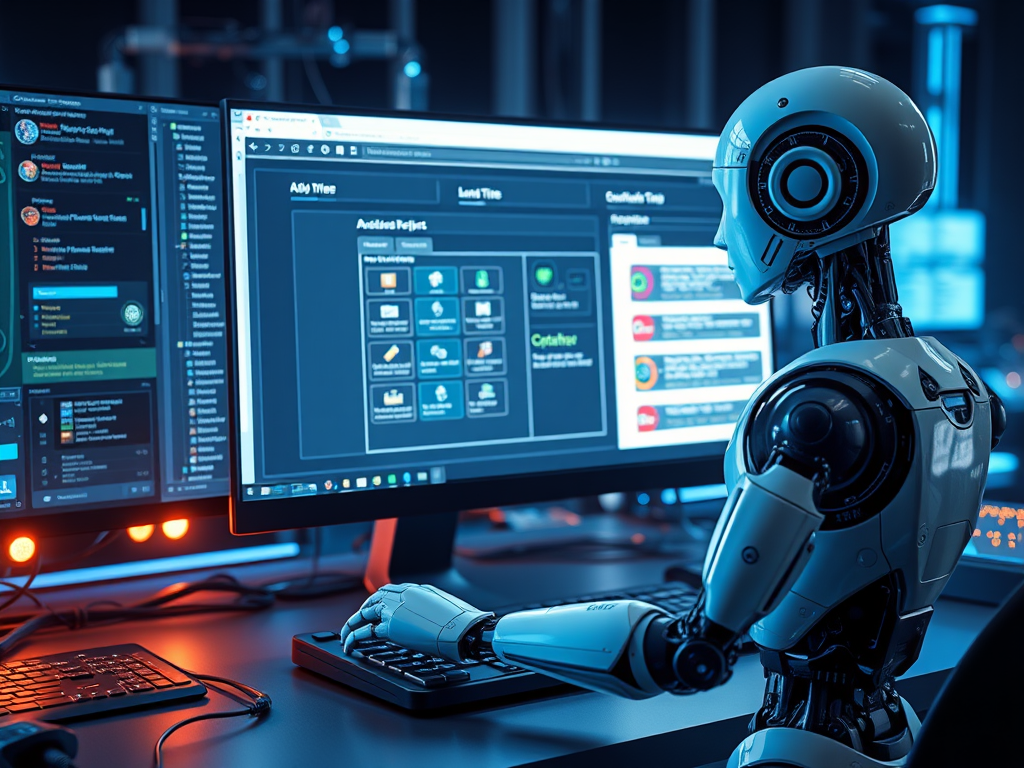OpenAI has recently introduced a groundbreaking AI innovation called “Operator,” a computer-using agent (CUA) designed to autonomously perform a wide array of tasks on the web. This marks a pivotal step forward in the evolution of artificial intelligence (AI) applications, with Operator combining state-of-the-art natural language processing, visual understanding, and advanced decision-making skills. Built on the foundation of OpenAI’s GPT-4o technology and enhanced through reinforcement learning, Operator empowers users to delegate complex, time-consuming tasks while maintaining user oversight and safety.
This article delves into the intricacies of Operator’s capabilities, how it works, the safeguards in place, and the potential impact of this technology on individuals and businesses alike.
The Core of Operator: The Computer-Using Agent (CUA) Model
At the heart of Operator is the Computer-Using Agent (CUA) model, which mimics how humans interact with graphical user interfaces (GUIs) in a web environment. Unlike earlier AI systems that primarily relied on APIs or structured data pipelines, Operator interacts directly with websites and apps by visually interpreting elements like buttons, menus, and text fields on a screen.
The CUA model uses GPT-4o’s multimodal capabilities, which allow it to process and interpret both text and visual information. For example, it can “see” a screenshot of a webpage and identify relevant elements such as form fields, dropdown menus, and clickable links. Once it understands the layout, it uses browser controls like a cursor to perform actions such as filling out forms, clicking buttons, and navigating between pages.
This is akin to how a human user interacts with a website but at a far greater speed and accuracy. By combining these visual understanding capabilities with reinforcement learning from human feedback (RLHF), Operator continuously improves its ability to make decisions and complete tasks more efficiently.
Capabilities That Redefine Productivity
Operator is designed to tackle tasks that typically require manual human effort, making it a powerful tool for both personal and professional use. Here are some of its key capabilities:
- Online Reservations and Bookings
Operator can navigate restaurant reservation platforms, analyze available time slots, and make bookings based on user preferences. This eliminates the hassle of manually searching and confirming reservations. - E-commerce and Shopping
Partnering with platforms like Instacart and eBay, Operator allows users to automate online grocery shopping or purchase other items. It can compare product prices, add items to a cart, and complete the checkout process within minutes. - Expense Management and Reporting
Filing expense reports is often tedious, but Operator simplifies this process. It can upload receipts, categorize expenses, and fill out forms on expense reporting platforms. - Travel Planning
From booking flights and hotels to creating comprehensive itineraries, Operator streamlines travel planning by navigating platforms like Expedia or airline websites. - Data Entry and Administrative Tasks
Operator excels at repetitive tasks like filling out forms, submitting documents, and managing online registrations. This is particularly valuable for businesses handling large volumes of administrative work.
Collaborations That Enhance Utility
To maximize its utility, OpenAI has partnered with leading service providers such as Instacart, Uber, and eBay. These partnerships ensure seamless integration between Operator and popular platforms, allowing users to perform tasks such as ordering groceries, booking rides, and purchasing items online without needing to manually interact with the websites.
For example, when integrated with Uber, Operator can book a ride by analyzing the user’s location and destination preferences. Similarly, with Instacart, it can automate grocery orders by selecting items from a shopping list and scheduling delivery times based on user convenience. These collaborations demonstrate the versatility of Operator and its potential to revolutionize task automation.
Safety Measures: Keeping Users in Control
OpenAI has prioritized user safety and transparency in designing Operator. Given the autonomy of the agent, there is a natural concern about its handling of sensitive information or high-stakes decisions. To address these challenges, several safeguards have been implemented:
- Explicit User Consent for Sensitive Actions
Operator does not proceed with tasks like banking transactions, medical decisions, or job applications without explicit user approval. For example, while it can fill out an online job application, it requires the user to confirm before submitting it. - Handling Challenges Like CAPTCHAs
If Operator encounters barriers like CAPTCHAs or password-protected fields, it does not attempt to bypass them. Instead, it alerts the user and requests intervention, ensuring that sensitive credentials remain secure. - Transparency in Decision-Making
Operator provides users with a detailed log of its actions, allowing them to review each step it takes. This transparency builds trust and enables users to understand how tasks are being handled. - Restricting High-Stakes Scenarios
In its current version, Operator avoids tasks that could have significant consequences if mishandled, such as stock trading or legal document preparation. By restricting such use cases, OpenAI ensures that the technology is deployed responsibly.
How It Works: A Step-by-Step Illustration

Let’s consider a scenario where a user wants Operator to book a table at a restaurant. Here’s how the process unfolds:
- Input and Understanding
The user provides a natural language instruction, such as “Book a table for two at a Vietnamese restaurant near me at 7 PM tomorrow.” - Navigation and Interpretation
Operator navigates to a restaurant reservation platform (e.g., OpenTable) and visually interprets the layout. It identifies relevant fields for input, such as location, date, time, and party size. - Decision-Making and Execution
Based on the user’s preferences, Operator searches for available options and selects the most suitable one. It then completes the booking by filling out necessary details and confirming the reservation. - Feedback and Verification
Once the task is complete, Operator informs the user, providing a confirmation message or email as proof. If any issue arises (e.g., no availability), it suggests alternatives or prompts the user for further instructions.
This workflow highlights the seamless integration of natural language understanding, visual interpretation, and action execution that defines Operator’s functionality.
Challenges and Limitations
While Operator represents a significant advancement, it is not without its challenges and limitations. Some of these include:
- Dependency on Visual Clarity
Operator’s effectiveness depends on the visual design of websites. Poorly designed or highly dynamic interfaces can complicate its navigation and interpretation. - Regulatory Concerns
The automation of tasks like online purchases or data entry raises questions about compliance with privacy regulations, especially when handling sensitive user data. - User Adaptation
While Operator is designed to be intuitive, some users may face a learning curve when delegating tasks to an autonomous agent. OpenAI is addressing this by providing clear tutorials and user guides.
Future Prospects: Transforming Task Management
Operator’s introduction marks OpenAI’s entry into the competitive AI agent market, positioning it alongside offerings from other tech giants. However, its unique approach to task automation sets it apart.
As the technology evolves, several developments are anticipated:
- Expanded Accessibility
While Operator is currently available to ChatGPT Pro users in the U.S., OpenAI plans to roll it out to a broader audience. This includes integrating it more deeply into ChatGPT and extending its functionalities to free-tier users. - Improved Multimodal Capabilities
Future iterations of Operator are expected to leverage enhanced vision and language models, enabling it to handle even more complex tasks with greater accuracy. - Integration with Enterprise Tools
Operator has the potential to revolutionize industries by integrating with enterprise software like CRMs, HR platforms, and financial management tools. This could streamline workflows and reduce operational costs. - Personalization
OpenAI is likely to introduce features that allow users to customize Operator’s behavior, such as setting preferences for task execution or integrating with personal calendars.
Conclusion: A Game-Changer for AI Applications
OpenAI’s Operator represents a major milestone in the evolution of AI, offering unprecedented capabilities for automating web-based tasks. By combining the power of the Computer-Using Agent model with partnerships, safety features, and a focus on user experience, Operator is poised to transform how individuals and businesses manage their daily activities.
While challenges remain, Operator’s introduction is a testament to the potential of AI to simplify and enhance human lives. As the technology continues to evolve, it is not hard to envision a future where autonomous agents like Operator become an integral part of everyday life, freeing up time and resources for more meaningful pursuits.


Leave a Reply